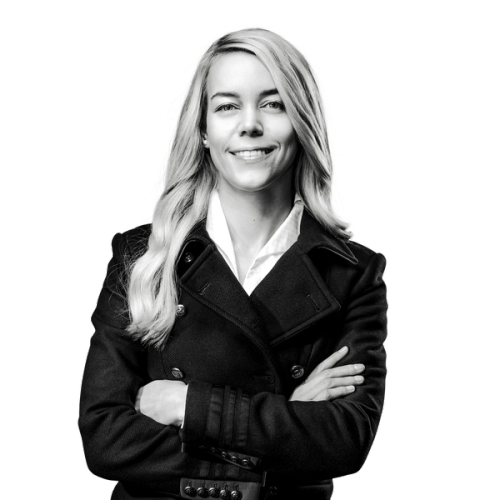The competitive city of the future
September 20, 2021
- New Insight

Songdo City (South Korea), Bergen (Norway), Woven City (Japan), Masdar City (Abu Dhabi), Paris (France) – these are current examples of exceptional urban planning and development projects worldwide. Today, urban centers in Germany no longer have a choice: They have to change, otherwise international competitors threaten to overtake them in the long term. In the final issue of the 'Future Cities' study series, FTI-Andersch presents global projects for the city of the future based on six macro trends that will further fuel competition for an attractive environment in which to live and work.
"If you look at what urban development projects have been launched around the world, you look at our German urban landscape in a bit of astonishment," says Dorothée Fritsch, Director at FTI-Andersch and co-author of the study. "Analogous to many of our traditional industries, we in Germany are working on improving in detail, but are in danger of missing out on the big trends in this world. Many times I hear the argument that reinventing a city on a 'greenfield' site is of course much easier than implementing change in existing structures. This argument is valid. However, all the greater should be our incentive to take up this challenge now and strive for real change. There are already many examples of this around the world, too, as our research shows."
In this context, our study 'The competitive city of the future: urban mega trends and note-worthy international city projects' can serve as both an inspiration and a threatening incentive to start making changes now. Based on six major trends in urban development, we present some of these projects here; for a detailed overview, please refer to the full study which can be downloaded below.
Trend 1: Digitalisation of all areas – Why access to broadband is necessary but not sufficient
In Songdo City, a planned city of the South Korean metropolis of Incheon, sensors can be found in roads, housing, virtually anywhere. These sensors measure and control consumption, air quality and traffic movements, and energy production is linked to real-time consumption. In Santander (Spain), garbage cans report digitally when they are full – and are emptied appropriately. Streetlights come on exactly when they are needed. Over 20,000 sensors help keeping track of and steering the Spanish city. "All over the world, cities are experimenting with how digital networking can help make life more livable and at the same time more sustainable," says Mike Zöller, Partner at FTI-Andersch. However, digitization also means that existing usage structures in city centers are called into question, for example through online retailing or home offices, to prepare the space that is freed up for new demands."
Trend 2: Decentralised urban concepts – Why grown structures in particular are a reason to question the previous spatial concept
"The concept of the centralized city goes back above all to the old, internationally now rather small-looking cities in Europe," says Dorothée Fritsch, Director at FTI-Andersch. “The congestion in many metropolises makes it clear how difficult it is to maintain this concept.” Paris intends to implement the “city of fifteen minutes” concept by Sorbonne professor Carlos Moreno. This implies that all the necessary requirements within a radius of 15 minutes satisfied can be, among others, shopping, health, work and leisure. Among other things, this will also be flanked by a new 30 km/h speed limit. The French city of Nantes has already introduced the concept in one district. China is planning the new city Xiong'an on 2,000 square kilometers area to be explored by foot. The Saudi Arabian mega-project Neom wants to link the pedestrian quarters that are to be created there no longer with individual transport, but exclusively with an underground system. Fritsch says: “Of course, the main challenge lies in the established structures; when cities or districts are newly designed in a greenfield approach, the ideas of course are much easier to implement. It will be observed how a city like Paris approaches this project in order to learn from it. "
Trend 3: Change in urban mobility – Why 'more' public transport is not enough and transport must be thought of differently
The Norwegian city of Bergen aims to be emission-free by 2030. That is why it started setting up so-called mobility hubs in 2018. These are places where people change from individual to public transport. The Lincoln settlement, a pilot project in Darmstadt, wants to keep classic car traffic as small as possible and relies on public transport, e-car sharing, pooling, rental and cargo bikes. Mike Zöller says: “In the medium term, classic private transport will not disappear. But it becomes clear that in modern cities, driving a car will be displaced by other means of traffic. This may include restricted areas or drive-in hours, limited parking space or increased fines for illegal parking. For the vast majority to profit from these changes, the right offers must now be devised, tested and implemented."
Trend 4: No Contrast of nature and habitat – Why 'living in the green' must also apply in the city in the future
Neom in Saudi Arabia is designed not displace nature, but rather to blend in – architecturally, energetically, fundamentally. A concept has already been implemented in Abu Dhabi in Masdar City, which is experimenting with concepts for the city of the future with the lowest possible energy consumption, little traffic and lots of green spaces. The world's first vertically planted building can be found in Nanjing, China: the Nanjing Vertical Forest. Barcelona is converting 21 intersections into green spaces where residents can feel connected to nature. “There is a catchphrase of 'fresh country air' and the exciting but 'dirty' cities," says Dorothée Fritsch. “In the future, however, the criterion for the decision to live in a city will be how clean it is and how it meets the future requirements for lower environmental pollution overall. This trend can also be seen in almost all cities in Germany. The contrast between nature and city needs to diminish."
Trend 5: New sector mix – Why the 'Corona shock' offers opportunities to create a new face for the city
"Triggered by the COVID-19 pandemic, the face of many inner cities has already changed," says Mike Zöller. "Vacancy rates are increasing, retail, as well as office space could continue to shrink. Infrastructure that is no longer needed can be rededicated. “This opens up opportunities for cities to make new inner-city offers. In Nuremberg, a parking deck was demolished, and a day-care center built on it, for example. In the middle of Manhattan, a former railway line is now a tourist attraction: New York City has set up a central, spectacularly located park/green area there. And the city of Siegen is moving the university's faculties from the outskirts to the city center. Inner-city retail and gastronomy will also benefit from this. “Where some areas are shrinking, there are opportunities for services, leisure time or needs such as health, childcare and education,” says Mike Zöller. “It is important that cities approach these processes in a well thought-out and planned way.” In doing so, they automatically help develop the 15-minute concept from France mentioned above.
Trend 6: Strong position in competition – Why cities will have to woo new residents and visitors with unusual ideas in the future
Dorothée Fritsch says: “Companies have to differentiate themselves in order to be relevant. The same applies more and more also for cities if they want to remain attractive. "In Japan, Toyota’s Woven City is being created of at the foot e Fujiyama. It is designed to be a city where residents want to try out new technical developments and prototypes and integrate them into their everyday lives. In the #ProjectOsloRegion project, Norway's capital Oslo is thinking well beyond its own city limits and wants to create a coherent space with which to present oneself in the future. “Such a differentiation can, however, start on a much smaller level,” says Dorothée Fritsch. The city of Hanau, for example, has developed a concept to support operators of pop-up stores by providing targeted advice and funding. "This gives the inner city the opportunity, for example, to always make new offers to inhabitants and visitors – and thus to remain attractive," says Fritsch. "Today cities are also looking for their 'purpose' – and the way in which they can best communicate it."
About the investigation:
The examples presented here are an excerpt from the sixth and final part of our study series 'Future Cities'. The full report 'The competitive city of the future: urban mega trends and note-worthy international city projects' provides further insights into future-oriented urban development around the globe. You can download the full document below.
About FTI-Andersch:
FTI-Andersch is a management consultancy that supports its clients in the development and implementation of sustainable future/performance and restructuring concepts. FTI-Andersch actively supports companies that have to deal with operational or financial challenges – or want to align their business model, organisation and processes for the future at an early stage.
The clients include medium-sized companies and corporations that operate internationally. FTI-Andersch is part of the globally active FTI Consulting Group (NYSE: FCN) with more than 6,400 employees.
Your Contacts
 Dorothée Fritsch
Dorothée FritschHead of Business Development & Strategy